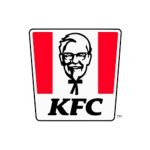By Avi Dan – CEO of Avidan Strategies, a consultancy that specializes in advising marketers about optimizing agency practices.
Advertising started when Carlton & Smith was founded in New York by William James Carlton in 1864. It was renamed J. Walter Thompson Co. when James Walter Thompson bought out Carlton in 1878. The agency was sold by Thompson to Stanley Resor for $500,000, 1916.
Resor was a true visionary. He pioneered market research, introduced scientific and medical findings in ads, hired some of the biggest names of the day, and co-founded the American Association of Advertising Agencies. Resor’s wife, Helen Lansdowne, became the first female creative director in advertising. She was a pioneer, using sex appeal in advertising, texts that engaged readers’ emotions and using artists like Norman Rockwell to work on ads. Under her, J. Walter Thompson became a creative force.
During the Depression years J. Walter Thompson became the largest agency in the U.S. and one of the largest in the world.
One of Resor’s lieutenants, John Orr Young founded Young & Rubicam in 1923 with Raymond Rubicam. Young handled the accounts and new business while Rubicam handled creative.
The agency grew rapidly during the era of network radio to become the second-largest U.S. agency. David Ogilvy, who viewed Rubicam as his inspiration, credited him with assembling “the best team of copywriters and art directors in the history of advertising,” whose ads “were read by more people than any other agency.”
In the 70’s Young & Rubicam pioneered the concept of the “The Whole Egg”, buying complementary agencies for all the client’s needs. It acquired direct response shop Wunderman, which put Y&R ahead of JWT for the first time; Landor Associates, a corporate identity design firm; and Burson-Marsteller, a public relations combination.
For half a century Young & Rubicam and J. Walter Thompson, together with BBDO, McCann, Doyle Dane Bernbach, Leo Burnett, Bates, Ogilvy, and later Saatchi & Saatchi and Chiat/Day were the creative jewels of Madison Avenue.
In 1987, in a hostile bid, a first in advertising, a small UK manufacturer of wire baskets and teapots called Wire and Plastic Products, acquired J. Walter Thompson for a record $566 million. A decade later WPP acquired Young & Rubicam for $5.5 billion.
Last week WPP announced that all three of its most prestigious and storied brand names – J. Walter Thompson, Young & Rubicam and Wunderman, with a combined history of 300-plus years – will disappear. They will be absorbed by VML, a customer experience shop. That would make VML the largest marketing services firm in the world with 30,000 employees.
The destruction of value is staggering. In today’s dollars, allowing for inflation, WPP paid $11.5 billion to acquire the eliminated brands. That’s more than its market cap.
The latest merger follows previous consolidations under Mark Read, then-new WPP CEO, in 2018. VML and Y&R merged to become VMLY&R, and Wunderman and J. Walter Thompson merged to become WT.
WPP currently also owns AKQA, BCW, CMI Media Group, EssenceMediaCom, Grey, Hill+Knowlton, Mindshare, Ogilvy, and Wavemaker. I would bet they do more of these large-scale consolidations in the next couple of years, though they’d go slow on the media agencies for a bit longer. Whether they brand it all as VML or whether it all becomes placed under the WPP brand still remains to be seen.
While the move will create scale, I believe that it is all about financial efficiencies. There were major client losses within the holding company in the last year, and it impacted both Y&R and JWT. WPP stock has been struggling for years, and it’s Read’s job to do something in an effort to turn that around.
WPP may think that clients don’t care about agency brands. I believe that brands matter to clients. They care about the differentiation, and agencies with clear positioning and set of values that they can relate to or choose to align with. Now, maybe some clients don’t care about these storied brands, simply because they’ve had the soul ripped out of them since they were acquired.
But clients clearly care about agency brands. This is why they’re choosing Wieden+Kennedy, Droga5, Gut Anomaly, Martin, Mischief and Goodby & Silverstein over big legacy networks that have been ‘merged’ to the holding companies to within an inch of their lives.
Brands are important because they attract great talent. Clients that want great, distinct, effective, fame-building and value-generating work go to powerful brands. The best talent wants to work somewhere that is famous.
I think WPP forget that it isn’t just the names which smart clients love, it’s the people. Clients need great people. The advertising business is just people and ideas. So, yes, the names aren’t important, but when they start merging different cultures thinking it makes no difference, then they’re very, very wrong.
This article was sourced from Forbes
MARKETING Magazine is not responsible for the content of external sites.
After 20 years of evolving technology, shifting market trends, and adapting to changing consumer behaviour, the media landscape has nearly reached saturation.
We’ve optimised to the fullest, providing advertisers with abundant choices across technology, platforms, data-driven marketing, CTV, OTT, DOOH, influencer marketing, retail, etc.
Media specialists have diversified, but with more options comes the challenge of maintaining income growth. The industry is expanding, but revenue isn’t keeping pace.
Now, we’re at a TURNING POINT: time to explore and harness new sustainable revenue streams. While GroupM forecasts a 7.8% global ad revenue growth in 2024, challenges like antitrust regulation, AI and copyright issues, and platform bans persist.
Collaboration is key: partnerships that thrive on synergy, shared values, and aligned goals are becoming increasingly essential.
Hence, the Malaysian Media Conference, in its 20th year, has assembled the partners and players under one roof on October 25 for a day of learning, sharing, and exploring.
REGISTER NOW










